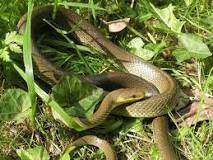
Aesculapian snakes are a new species to the UK, but are found in europe. Does that mean that it should be exterminated, It is having a problem in Europe, as temperatures are getting too high for it to thrive.
It is not actually new to the UK! Indeed, while it has been locally extinct for 300,000 years, its relatives have continued to live in Europe. It was lost from the UK in the last ice age, as being a cold blooded animal, it was unable to survive.
It should be noted, that it is around 14,000 years ago that the mammoth was lost from the UK, so our country would have likely been quite different. Still, as it was only lost from here, it is hard to argue that its introduction would damage the UK.












